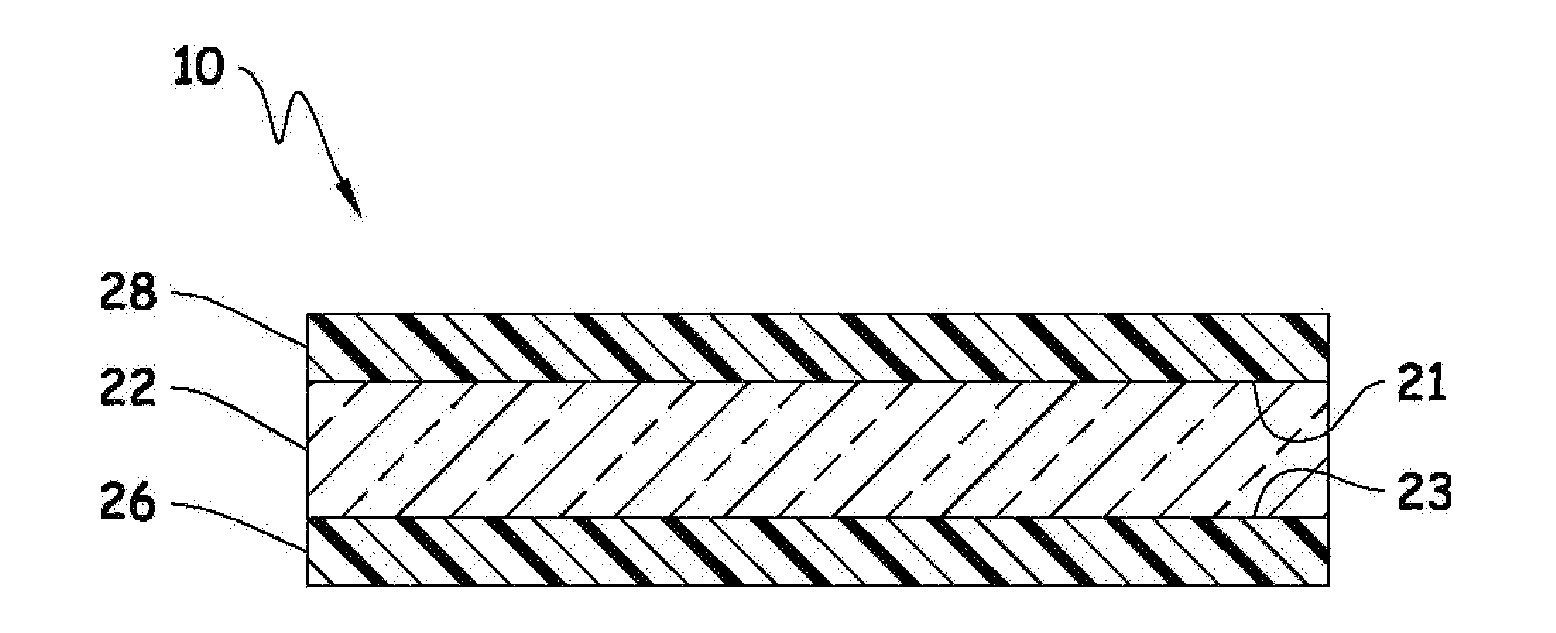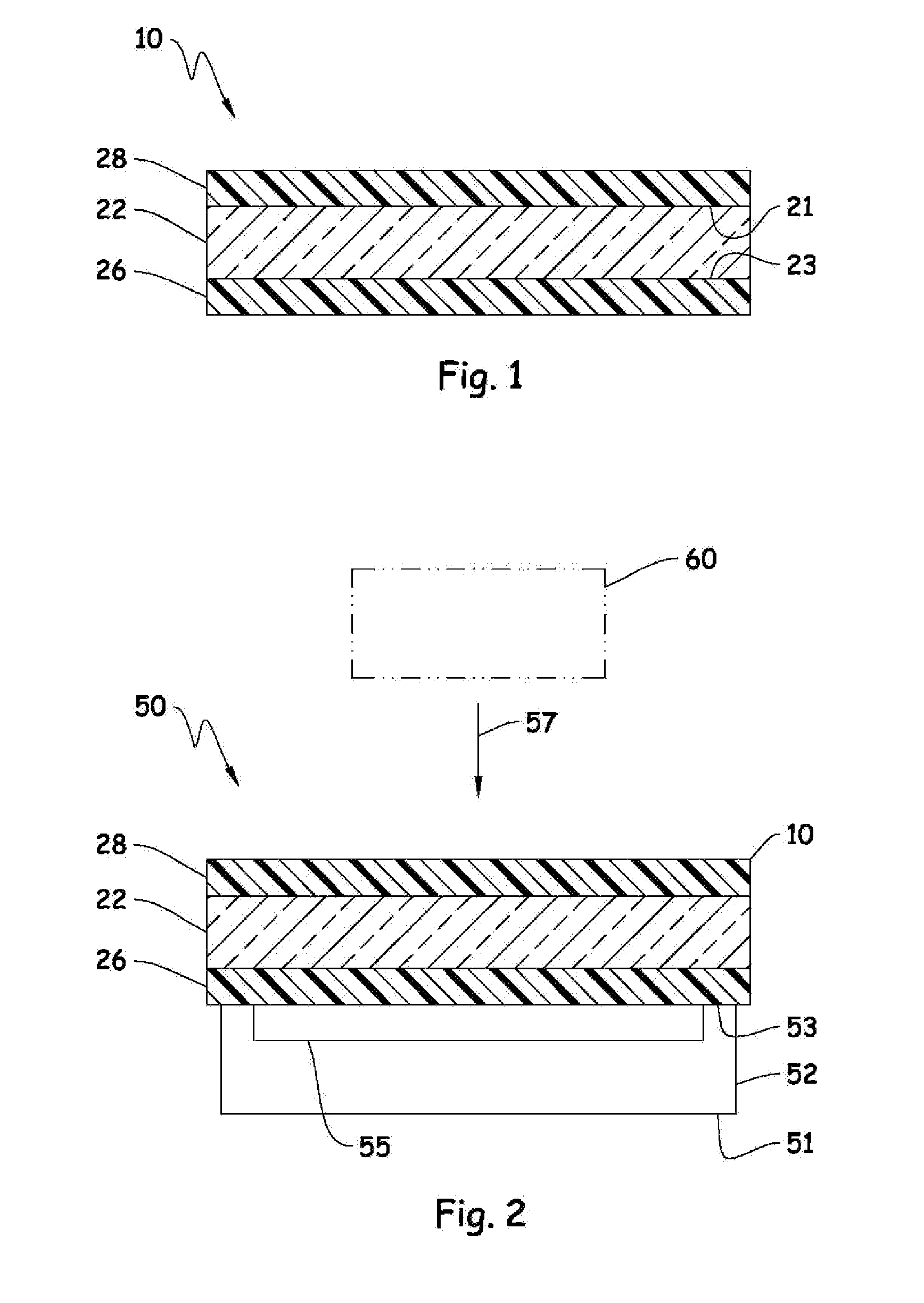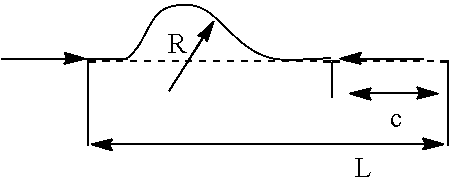Composite laminates and uses thereof
a technology of composite laminates and laminates, applied in the field of composite laminates, can solve the problems of unwieldy and unpredictable task of creating improved composite laminates, especially vulnerable to mechanical damage to photovoltaic cells and modules, and achieve the effects of improving mechanical damage resistance, reducing manufacturing costs, and improving mechanical damage resistan
- Summary
- Abstract
- Description
- Claims
- Application Information
AI Technical Summary
Benefits of technology
Problems solved by technology
Method used
Image
Examples
example 1 (ex-1)
A 4-Layer Organic Polymer-Glass Laminate (ETFE-1 / SC-PO-1 / Corning Glass / SC-PO-1)
[0121]Apply a 4 mils (100 μm) thick layer of SC-PO-1 (described previously) to each face of a 2 mils (50 μm) thick Corning 0211 glass sheet, then apply a 2 mils (50 μm) thick layer of the ETFE-1 to one of the layers of SC-PO-1 to give a 4-layer sandwich structure. Prior to applying the layers, the layers are protected by removable cover sheets consisting of standard white laser printer paper, which removable cover sheets are removed (i.e., pulled out) just prior to lamination. Laminate the 4-layer sandwich structure by degassing it for 5 minutes, heating the degassed sandwich structure to 150° C., subjecting the resulting heated sandwich structure to a reduced pressure of 50 kPa (gauge pressure) for 2 minutes, and then returning the resulting depressurized sandwich structure to 101 kPa for 10 minutes, and allowing the resulting 4-layer organic polymer-glass laminate (having a total thickness of 12 mils (3...
example 2 (ex-2)
A 3-Layer Organic Polymer-Glass Laminate (SC-PO-2 / Schott Glass / SC-PO-2)
[0122]Apply a 3 mils (75 μm) thick layer of SC-PO-2 (described previously) to each face of a 4 mils (100 μm) thick Schott D263T glass sheet to give a 3-layer sandwich structure. Prior to applying the layers, the layers are protected by removable cover sheets consisting of standard white laser printer paper, which removable cover sheets are removed (i.e., pulled out) just prior to lamination. Laminate the 3-layer sandwich structure degassing it for 5 minutes, heating the degassed sandwich structure to 170° C., subjecting the resulting heated sandwich structure to a reduced pressure of 50 kPa (gauge pressure) for 5 minutes, and then returning the resulting depressurized sandwich structure to 101 kPa for 10 minutes, and allowing the resulting 3-layer organic polymer-glass laminate (having a total thickness of 10 mils (250 μm)) of Example 2 to cool to room temperature. The 3-layer organic polymer-glass laminate is to...
example 3 (ex-3)
A 3-Layer Organic Polymer-Glass Laminate (SC-PO-2 / Schott Glass / SC-PO-2)
[0123]Repeat the procedure and tests of Example 2 except apply a 15 mils (375 μm; instead of the 3 mils thickness of Example 2) thick layer of SC-PO-2 (described previously) to each face of a 4 mils (100 μm) thick Schott D263T glass sheet to give a new 3-layer sandwich structure. The resulting 3-layer organic polymer-glass laminate (having a total thickness of 34 mils (850 μm)) is tough and flexible as characterized by the two-point bending test and passes a simulated hail impact test based on standard IEC 1262. Results are reported later in Table 1.
PUM
| Property | Measurement | Unit |
|---|---|---|
| Temperature | aaaaa | aaaaa |
| Weight | aaaaa | aaaaa |
| Length | aaaaa | aaaaa |
Abstract
Description
Claims
Application Information
 Login to View More
Login to View More - R&D
- Intellectual Property
- Life Sciences
- Materials
- Tech Scout
- Unparalleled Data Quality
- Higher Quality Content
- 60% Fewer Hallucinations
Browse by: Latest US Patents, China's latest patents, Technical Efficacy Thesaurus, Application Domain, Technology Topic, Popular Technical Reports.
© 2025 PatSnap. All rights reserved.Legal|Privacy policy|Modern Slavery Act Transparency Statement|Sitemap|About US| Contact US: help@patsnap.com



